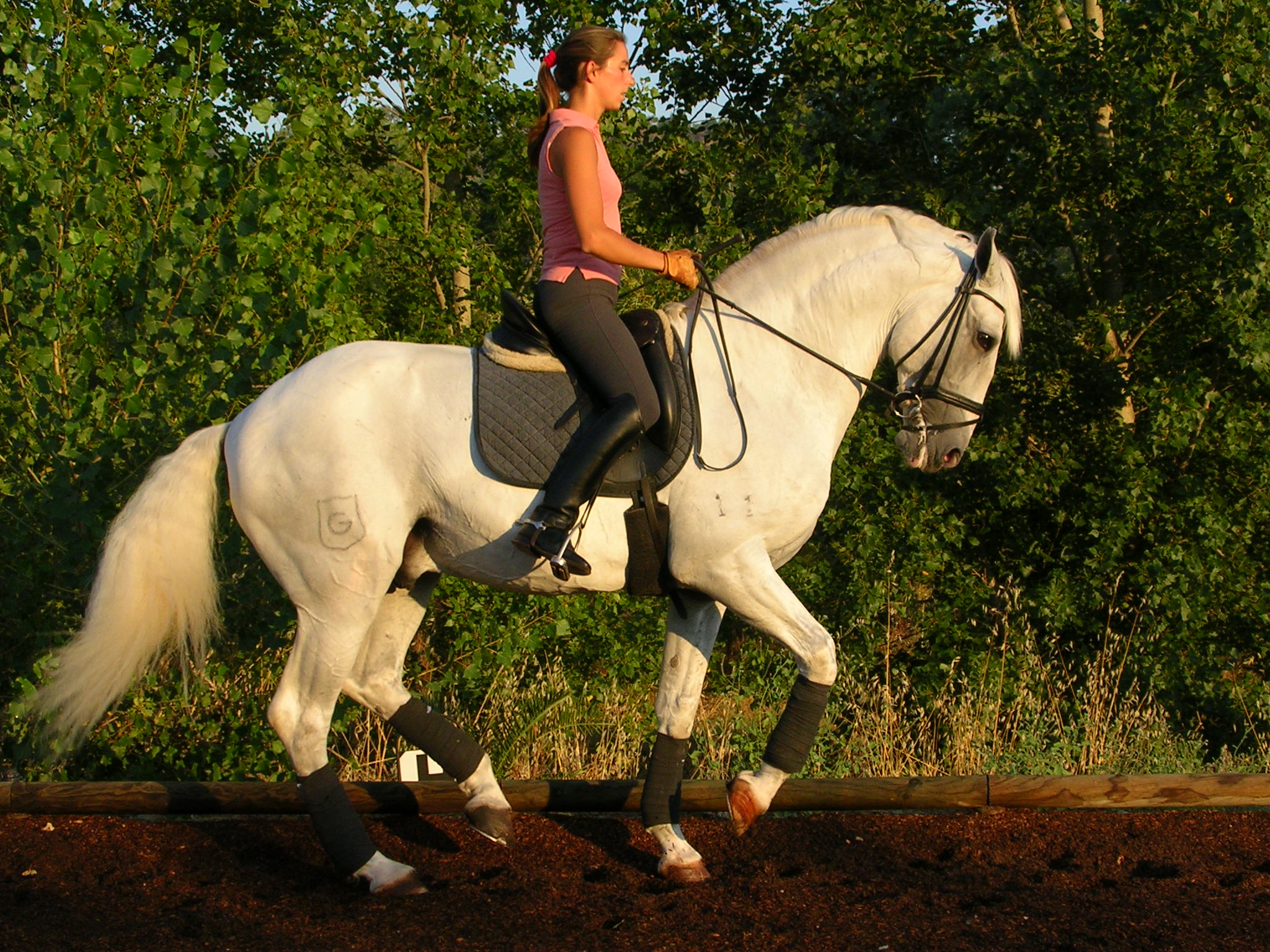Here at Equestrian Escapes we have an office of equestrian experts all chomping at the bit to offer you advice and expertise about all things equestrian. Over the winter months we are endeavoring to compile an A to Z of equestrian facts designed to increase your knowledge of the horse world.
True aids are generally considered to include the voice, hands, legs and seat. Artificially aids can include whips or spurs. We will start by considering the true aids as teaching a horse to respond to these aids is the very corner stone of equestrian training.
The voice
From the moment a foal is born we are talking to him. We are stroking him and using a gentle tone to encourage him to accept us as a friend and not something to be afraid of. By nature horses are flight animals and it is our job to persuade a horse that we are no threat to him, in fact associating with us may actually improve his ‘safety’ within the herd. It is hard to know who was the first person to ‘click’ at a horse to encourage him to move forward but nowadays the majority of horses understanding tongue clicking means to move forward generally with more energy. Dropping the tone of the voice and saying ‘wooooah’ has the opposite effect and assists in communicating a slowing down aid to your horse. This is an aid I have used for years whilst eventing, I always use this command to reduce speed from a gallop to a canter and from a canter to trot and so on (so much better than pulling on the mouth!)
The hands
I have to start this with an excellent quote by Richard Shrake who said "One pair of good hands is better than having a thousand different bits."
It takes time to develop good hands but it is the greatest skill you will ever learn and one worthy of hours of practice. Never forget that your hands are connected to your horse’s mouth and he will feel even the smallest vibration of your little finger! There is no better feel than galloping on a well trained horse who has a mouth like silk and the two of you communicate via the reins with the slightest of feels. When I am teaching I try to explain that the communication down the rein is rather like fly fishing, you cast out the rein and entice the horse to take a contact from you (not vice versa!) then you reward him by offering him a soft and consistent contact in return. If you pull hard the line will break, if the contact is lost the ‘fish’ will escape, when the contact is mutual, soft and even you can reel him in (so to speak!).
The legs
The inside of the calves is the part of the leg that you use to ask your horse to move forward. This should be applied as a squeeze rather than a kick – my first riding instructor who was a fantastically knowledgeable Irish lady who taught with such passion and foresight that 30 years later I often relive her lessons whilst schooling my horses, used to say to me ‘it is like squeezing tooth paste on to a tooth brush, if you do it too hard it will squirt into the sink, not hard enough and nothing will come out!
Try not to get into the habit of nagging with your legs, just give one clear aid and expect that the horse will respond from this. If he doesn’t respond this is when you can back your leg up with an artificial aid eg a schooling whip, as you squeeze tap him with the schooling whip behind your leg to reinforce the aid. Whips are not for punishment they are just for reinforcement, none of my horses are scared of schooling whips, I never try to hurt a horse with a whip a small tickle is all that is required to remind him to listen to your leg!
The seat
Over time and with a lot of practice you will begin to develop an ‘independent seat’ this means that as a rider you are able to use hands, legs and seat aids independently and distinctly. I always think of this a bit like ‘drumming’ when you first start to drum it is almost impossible to have two hands and one leg working independently on different beats – my wonderful Irish instructor always said to me it is a bit like trying to pat your head and rub your tummy at the same time – difficult but with practice not impossible.
So what can we achieve when we ride with an independent seat and we have a feather like contact on our horse’s mouth as he moves forward from our slightest aid? Well why not ask the lady in the picture, I am sure that she would have something to say on the matter!
